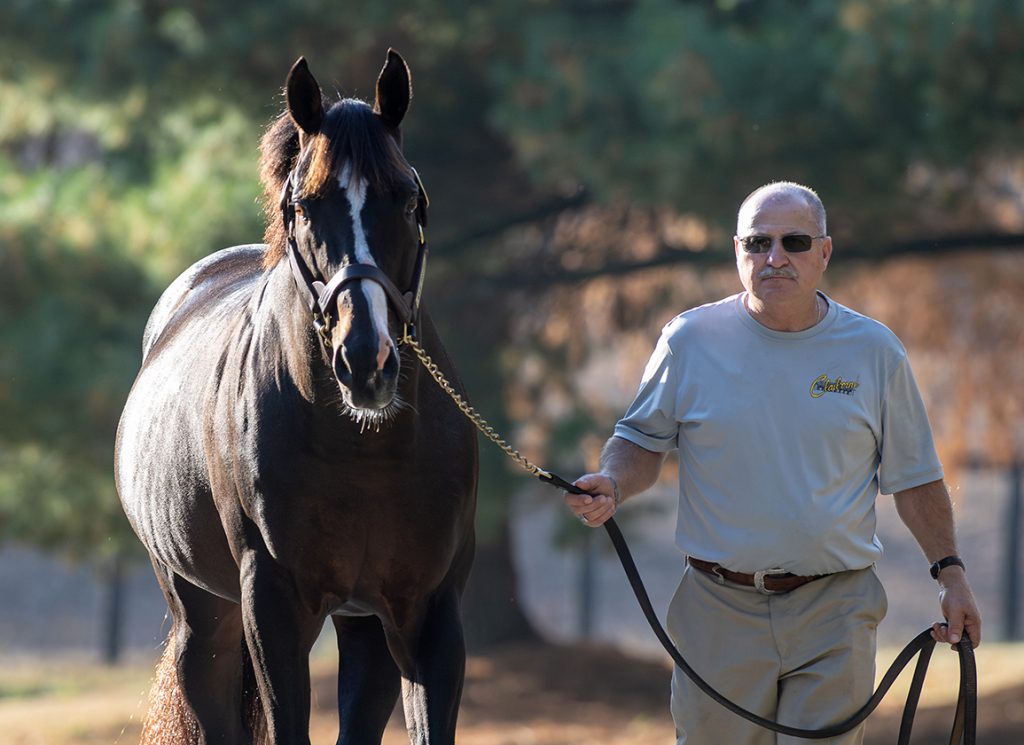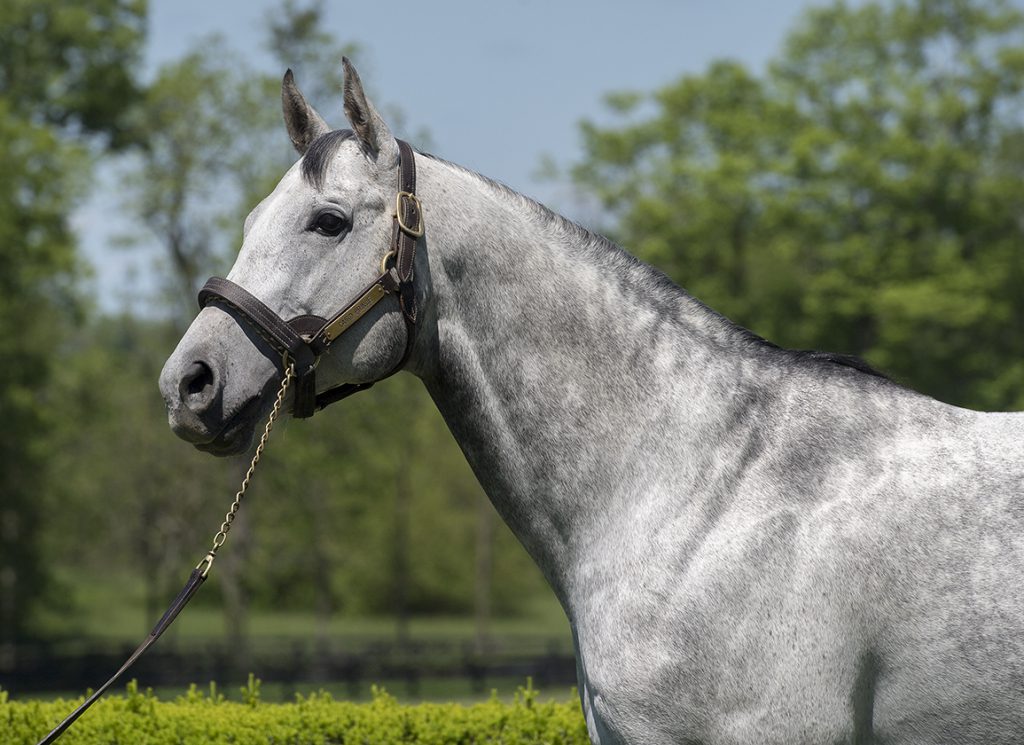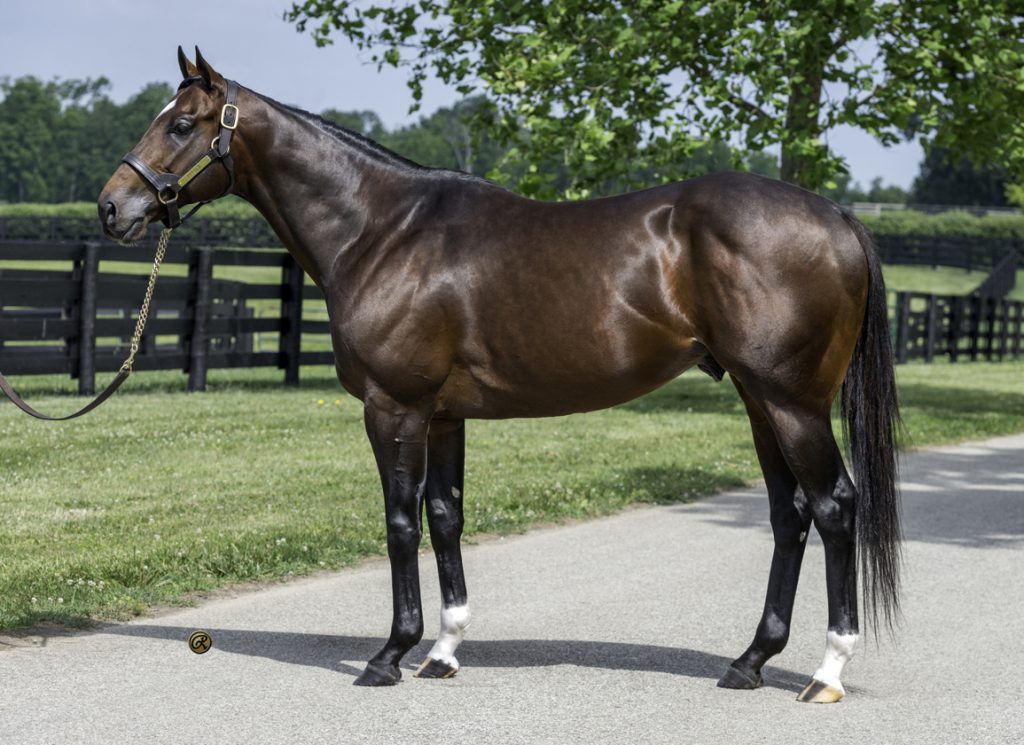In our walk of life, nothing succeeds like succession.
As with any other form of agriculture, a horse farm is not just a business but a legacy sometimes shaped by several generations of rain-or-shine toil and kitchen-table lore. The balance sheet may happen to be in the black, or in the red–but that's just a moment in time. How does one put a price on the decades of patient nurture that have gone into land and bloodlines?
Yet there's never any guarantee about the next generation, whether in terms of its enthusiasm or eligibility. And, even if both those are present, there are bound to be sensitivities over the timing and structuring of transition. In this new, occasional series, TDN will visit with people who have experienced such challenges: whether those who hand over a life's work, or those charged with taking it forward; sometimes, we'll hear from both.
No better place to start than with Walker Hancock, whose accession as president at storied Claiborne Farm at just 25 was, in this context, just about as conspicuous a transfer of responsibility as you'll ever see. Incredible as it must seem, both to Walker himself and to those originally startled by his precocious promotion, this year he will already complete his first decade at the helm. His father Seth has been duly rewarded for that bold vote of confidence, then, the farm now being in hands still full of youthful vigor and ambition, while far more seasoned than could generally be expected in one of Walker's age.
To a degree, of course, the gamble was emboldened by the fact that Seth had been even younger when himself appointed president. At the same time, whatever the similarities, the single factor that most sets their respective situations apart could not be more crucial. For Seth was only elevated so giddily because of the abrupt and premature death of his own father, “Bull” Hancock, such a towering figure in the Bluegrass that people far beyond Claiborne felt that they, too, had in some measure suddenly lost a patriarchal influence. (There was also the incidental drama of Seth's older brother, Arthur, quitting to achieve his own, epic vindication down the road at Stone Farm–and we'll be calling on Arthur and his daughter Lynn later in this series.)
So while Seth had to find his feet in the throes of bereavement, not to mention fireworks between his brother and the powerful advisers presiding over the transition, Walker remains blessed to be able to turn to his father for counsel.
“Dad had a trial by fire, literally had to figure it out on his own,” he says. “So after he gave me the reins, it was comforting to know that he's still in the background, and that I can always run things by him. I can say, 'Well, I'm not quite sure what to do here,' or 'I can't figure out a mating for this mare, what do you think?' So that's been a luxury for me. He never had that. It definitely takes a little pressure off, makes things a little more comforting, at least when you start out.”
That said, just about the first thing Seth was able to do was syndicate a horse called Secretariat.
“So he got things figured out pretty quickly,” Walker says with a smile. “Because he had to! I certainly didn't make that kind of a splash. But maybe one day…”
The common denominator in all these situations is how a relationship based on parental authority, through years of upbringing, can evolve so that a son or daughter, if only in a professional dimension, has the confidence to say: “Sorry sir, sorry ma'am–but I'm the boss now.”
“We've always got along for the most part, but like anybody, we're going to disagree on some things,” Walker says. “Thankfully, they've been few and far between. When you work with your father, you're younger and sometimes you'll see things differently, which is fine. But I give him credit: especially in the last few years, he's really kind of said, 'You're in charge. If that's what you want to do, go ahead.'”
Walker suspects that his father had taken note of equivalent handovers faltering precisely because of inflexibility in the older generation. And that's certainly a delicate challenge, whenever a filial relationship extends into business. As from any parent, growing up you receive instruction and discipline–but suddenly they have to back off and leave you, if necessary, to learn by mistakes.
“I think it was hard for me to understand that, at first,” Walker says. “It was like, 'All right, whatever he says, I'm going to do.' Because that's what I've done my whole life. But then there comes a time where you have to say to yourself, 'Well, you're in charge now. You're going to have to stand up to him at some point, if you feel something isn't going right.' But it feels very successful, because we have still managed to maintain that father-son relationship.”
There were bumps on the road, for sure: the little test cases. It sounds as though the opening of a visitor center at Claiborne may have been a case in point.
“It was kind of a big deal for us, in terms of commercializing a brand that has always been pretty close-knit,” Walker acknowledges. “I just felt like that was really what we needed to do at the time, and my sister [Allison] and I had a plan to make it happen. But whenever Dad and I have gotten a little sideways with one another, at the end of the day I think he can appreciate that I'm just trying to do the best I can, and move the farm forward, and that sometimes it might be a little more progressive or at least different from the way he'd do it.”
And, in fairness, Walker stresses that his father always showed due sensitivity to the unique pressures of succession–right back to when he was a kid. It was made perfectly clear that Walker and Allison could chart their own course in life, according to whatever preferences evolved as they grew up. Allison, indeed, never made quite the same connection with horses, albeit remains part of the family operation, heading up the visitor center and merchandising.
“Again, I give credit to my dad: he let me find my way,” Walker says. “At an early age he told me, 'If this is something you don't want to do, don't feel any pressure. You don't have to do this. We can sell the farm, whatever. Because if you don't have a passion, there's no sense doing it. If you don't really, truly love it, you're not going to be successful.' And actually because he didn't pressure me, I think that's one of the reasons I gravitated towards it. If he'd been waking me up at five every morning, saying, 'Get to that barn, you got to clean stalls!' I probably would have resented that, or maybe got burned out.”
As it was, Walker was able gradually to absorb the enchantment of the Thoroughbred from the environment in which he was growing up.
“At the farm, I started at the bottom,” he recalls. “Weeding double fence rows, whatever. At the time we still did a lot of hay and straw, put it in the barns for a couple of summers. I really did work my way up and can now really appreciate the hard work that so many people have to put in. And at least they all know that I did it at one point, as well, so it's like, 'Well, if he did it, I can do it.'”
By high school, Walker had recognized that he was not going to make a baseball professional–the single menace he ever admitted to his Claiborne destiny. But even once his heart was set on the family business, his parents made sure he went away to college so that he could encounter people from other walks of life, and sample the kind of Main Street existence he'd be turning down. So he went to the University of Florida, majoring in Animal Sciences.
“The idea was that I needed to go away, do something else for four years and figure life out for myself,” Walker explains. “And honestly it was the best thing I ever did. I was able to grow up, make new friends and connections, learn how to deal with uncomfortable positions. You can get stuck in this bubble here in Central Kentucky: you're so used to horses being a part of your life, going to Keeneland in the fall and the spring. And now here were all these people that, if they'd heard of the Kentucky Derby, wanted to know why a horse couldn't run in it twice! So it was really good to be exposed to a different culture.”
So while ever grateful for being raised at Claiborne, Walker could become his own person and develop his own perspectives. In the same way, since taking over, he has had to put his own stamp on things while on keeping aboard clients whose own families have a generational relationship with the farm. There literally came a day, for instance, when “Mr. Phipps” told him: “Walker, you need to call me Dinny now!”
“It's just another part of the transition,” Walker says with a shrug. “You're no longer the little kid they saw at the races. You develop more of a client relationship. That was definitely challenging. Thankfully, we have a lot of outstanding clients that have been with us for a long time. But at some point we need to start bringing in some younger people, too–and that's another challenge, finding the right kind of people to keep the farm special while also moving forward.”
Walker feels blessed, in embracing these challenges, by a priceless rapport with Bernie Sams, whose official title as Stallion Seasons and Bloodstock Manager is barely adequate for the deep knowledge and down-to-earth style that guaranteed continuity to all parties: Seth, Walker, the clientele.
“He's been unbelievable, awesome,” Walker says. “We've traveled the world together. He's taught me so much and pretty much been a mentor to me. It certainly gave me a little more confidence to have someone like Bernie around, that's been with Claiborne for 20-plus years and understands so well what we do.”
He feels similarly indebted to farm manager Bradley Purcell, and also to his aunt, Dell Hancock.
“Aunt Dell has also been a tremendous supporter of mine throughout the transition process,” Walker stresses. “She's always there to cheer me up after a bad result in the sales ring or racetrack. Her positivity has helped me persevere through some low times, and I can always count on her to lift me back up and find the bright side of every scenario.
“As for Bradley, he's so professional and level-headed that I couldn't do the job without him. I never have to worry about the day-to-day operations, thanks to his knowledge of horses and understanding of the Claiborne brand. I can be away from the farm and know that everything will continue to run smoothly, which is very comforting.”
But if some faces and practices stay the same, in other ways even a farm as symbolic as Claiborne must adapt to a changing market. It was striking, for instance, that as many as 171 mares were granted a date with rookie Silver State in 2022. Following the defeat of the proposed 140-mare cap, farms like this one must decide where to strike a balance: should they protect their clients from the inundation of catalogues, the clear risk at more industrial operations? Or should they seek the accountancy advantages of a bigger book, whether in writing a check for a stallion or hiring him out at a milder fee?
“Ideally, we'd only breed our stallions to 120 to 140 mares,” Walker says. “But if a bigger book is how we stay competitive in the marketplace, then that's what we'll have to do. It's right by the horse, because you have to give them a chance to succeed. It's right by the clients that support him, and the syndicate members that own shares. I mean, it's probably not what we want. But the market's changing, and while I wish we could be stubborn and stick to our old ways, we'd get left behind.
“And I feel like we've found a good balance. We're never going to do over 200, or anything like that, but we probably have to beef our numbers up from what we were doing at 120, 130. It's hard to syndicate a horse if the shareholders know that money will be left on the table because you're not breeding as many mares as they'd get investing in another stallion. So, yeah, it's a changing environment and a difficult one. But I'm sure people had a fit when stallions went from 40 mares to 60, and again when they went to 100. The reality is that we have to keep up, or get left behind.”
Walker has not enjoyed missing out on potential new stars for the roster because rival offers were predicated on huge books of mares.
“You get beat so many times,” he says. “And it's like, 'Well, do we just keep doing this in the expectation of a different result?' But that's just not going to happen. So you're better off figuring out ways to change things up a little bit and stay competitive. In today's world it's hard to maintain your traditions and your values, with the market forcing your hand. But I do feel like there's a balance and hopefully we have found it.”
As things stand, the roster is headed by a venerable stallion in the sunset of his career, War Front. But Walker and his team are certainly sticking to their principles with their younger guns: they have gone back to the Danzig mine for Silver State, for instance, besides two of War Front's own sons, War of Will and now Annapolis. The unusual versatility of War of Will on the racetrack, meanwhile, is underpinned by the kind of deep pedigree that has always been a Claiborne hallmark. In other words, even as Demarchelier (GB) opens lines the other way, this is still a farm that can transcend the Atlantic divide.

War Front | Sarah Andrew
“We have a lot of unproven young stallions right now,” Walker says. “We're out there to find the next War Front, a horse that can keep carrying the water for us. Again, it's about trying to find a balance. Because it also makes things difficult that people want to sell these horses right after they win their first Grade I. To me, in the long run, that's a losing proposition.”
So some old principles will stand. Claiborne will continue to seek wholesome genetic models for replication. But the farm will continue to adapt, too. After all, that's just what Bull Hancock did in his day.
“And I'm sure dad did things differently than my grandfather, likewise,” Walker remarks. “When my grandfather died, it was in his will that we had to sell everything. Well, after 10 or 12 years my dad felt, 'You know what? This isn't the way we need to do things.' And Swale came out of the first crop where he kept horses.
“It would be awesome if we could just run Claiborne the same way as we did in 1948. But the fact is that the industry has changed, even in the last five years; sometimes it feels like it changes almost from year to year. And you have to be willing to respond. For the old timers, I think they'd say the industry has gone too far by them. Dad is probably glad that I'm in charge now.
“I'm a fifth-generation horseman, fourth generation to run the farm. You don't want to let any of your forefathers, grandfathers, fathers down by dropping the ball. So you definitely feel that pressure. Keeping places like this going, through families, is not easy. Hopefully my kids are interested, and their kids too. But with the times changing so rapidly, who knows what the future looks like? All we can do is live in the present, and try to do our best.”
The post ‘Succession’: A New TDN Series – Walker Hancock of Claiborne appeared first on TDN | Thoroughbred Daily News | Horse Racing News, Results and Video | Thoroughbred Breeding and Auctions.









